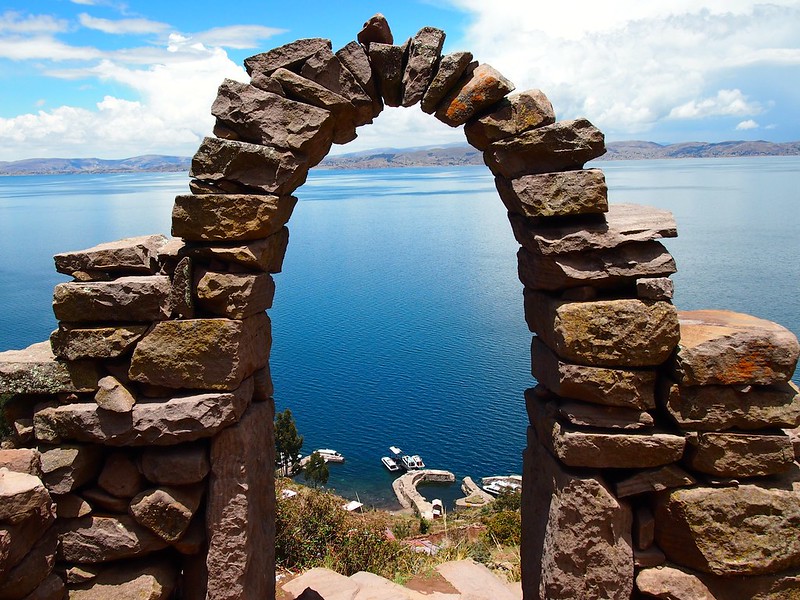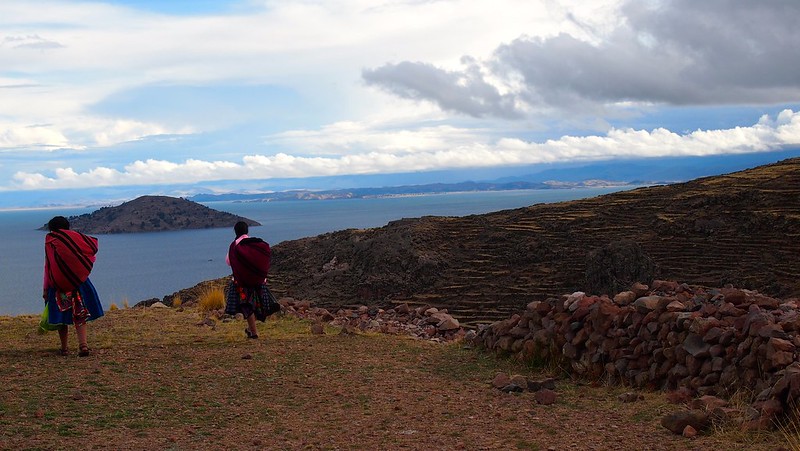A low water mark at Lake Titicaca
Lake Titicaca — it sounds so exotic and remote, and the name made you giggle in 7th grade geography (maybe it still does). And our first impression of it was awful.
The jumping off point for visiting the world’s highest navigable lake from the Peruvian side is a drab little town called Puno. It’s one of the highest cities in the world at 3,830 m (12,556 ft), making it difficult to breathe if you aren’t acclimatized. It seems to be comprised of tacky tourist lanes and shabby, slightly scary outskirts. There are a dearth of good restaurants and a surfeit of travel agencies selling formulaic lake trips.

The main attraction of Lake Titicaca — the famous Uros floating islands, made entirely of totora reeds — is literally a tourist trap. The morning we took a boat out there, we were deposited on an island about the size of a big American living room with nothing to do but peruse stacks of tacky souvenirs that looked as if they were made in China, not Peru. But here’s the kicker: In order to leave, we had to pay an additional fare to be taken on a “traditional boat” (that was pushed by a motor boat) to a different island, where we were again hassled to buy crafts, food, and drinks. Unless we wanted to swim back to Puno, we were literally trapped! We were eventually able to catch the ferry back to Puno from here after enduring sullen glares from the islanders when we refused to buy anything. This is one of the ugliest sides of tourism we’ve ever seen — the caricatures the locals make of their traditions, the obvious shakedown on transportation, the fakeness of it all (it’s rumored none of them even sleep on the islands anymore), and the persistent poverty even after decades of tourism. It all added up to a really uncomfortable experience.
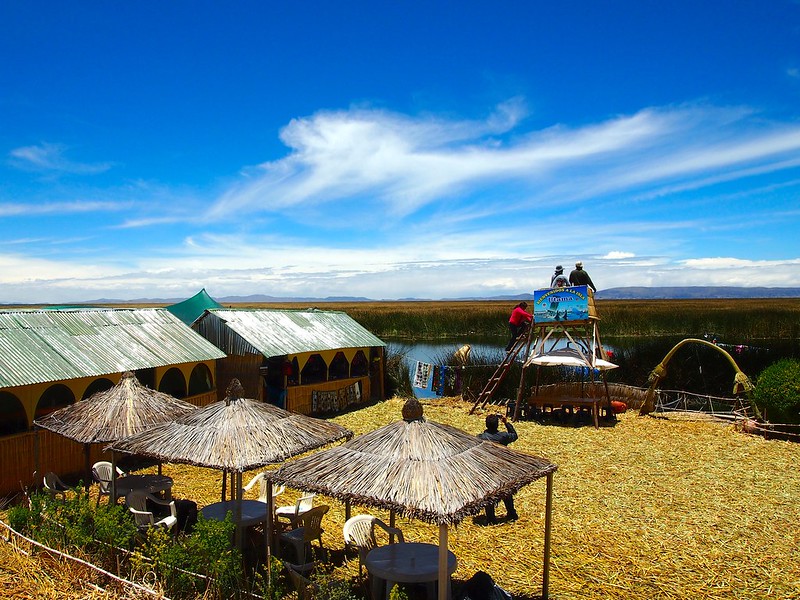
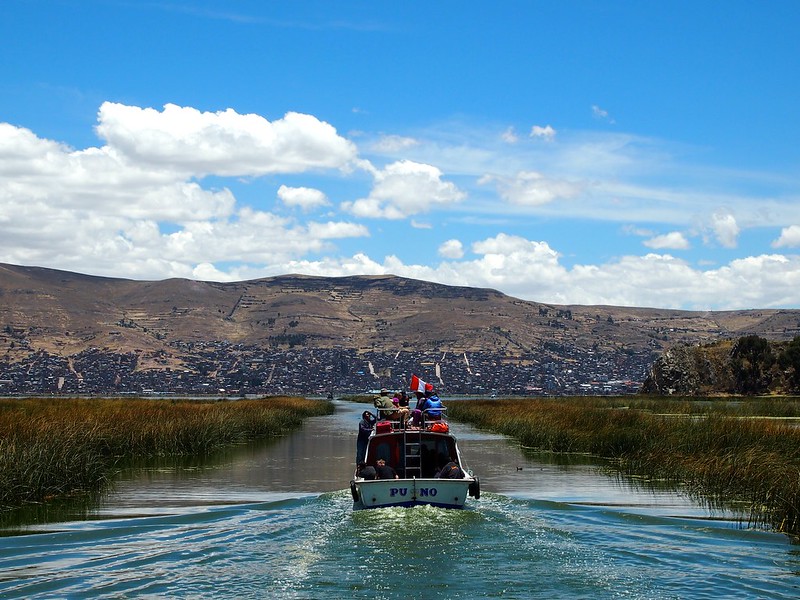
At this point, we were tempted to take the next bus to Cusco, but decided to stick around for a few more days and see if the more outlying islands would be better. And we’re glad we did, for a couple of reasons.
First, that night we unexpectedly ran into a couple of familiar faces. We first met Rikki and John, another lawyer-and-IT-consultant married couple traveling the world for a year in a little restaurant in McLeod Ganj, India back in May. We were all completely flabbergasted when we ran into each other again in the lobby of our hotel in Puno, Peru months later! Check out their perfectly titled blog at nokidsnomortgage.com to see what they’re up to. We caught up with them over dinner and it was a blast. Maybe it is a small world after all.
Second, we stubbornly made the effort to reach other islands. The morning after our disappointing trip to the Uros Islands, we went down to the dock and booked passage on the Amantani Island ferry. The 30 sole fare (about $10 — and only one fare!) includes a blessedly quick stop on one of the floating islands, an overnight stay on Amantani, and a stop on the island of Taquile the next day. It takes about 4 hours to motor out to Amantani, an actual island in the middle of the lake. We stayed with a family out there and spent our afternoon exploring the island, hiking up to pre-Inca ruins and watching the pace of life in this place that doesn’t appear to have changed much over the centuries. We didn’t see any cars, or even a bicycle. People make a lot of their own clothes, and till the soil with mules and their own backs. Our host family fed us a simple lunch, dinner, and breakfast (lots of potatoes out here). Even though we saw very few other tourists out on Amantani, apparently nearly every family in town participates in the homestay program in order to supplement their income. The next day, we wandered through Taquile, an island that looks almost Mediterranean. The people here still wear traditional clothes and make the most beautiful handmade alpaca textiles.

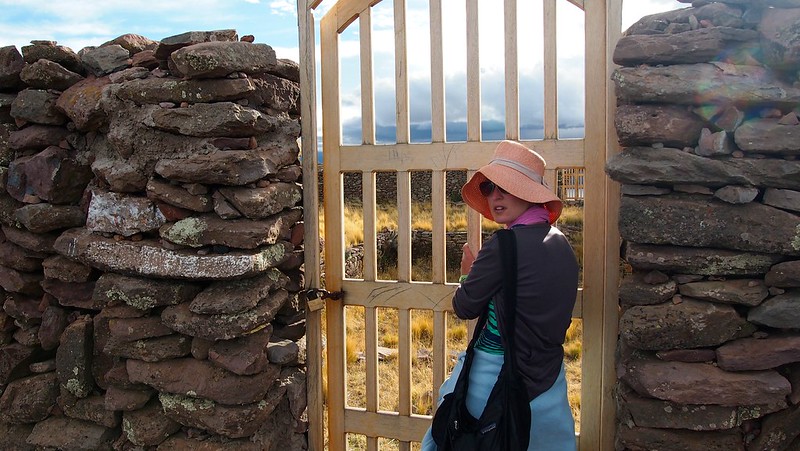
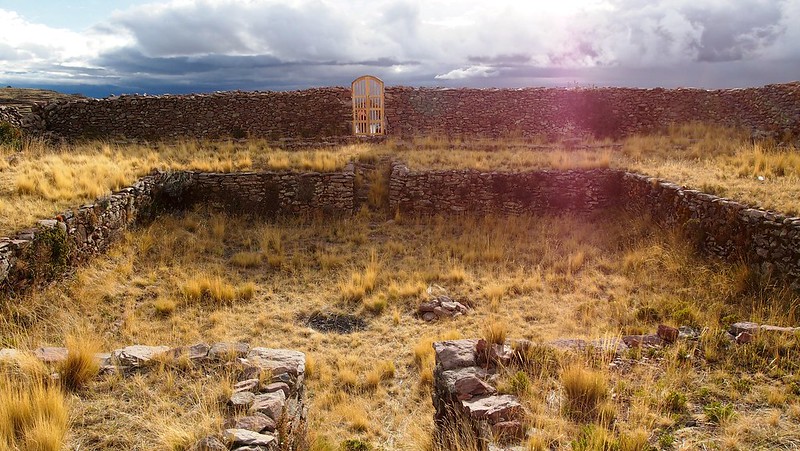
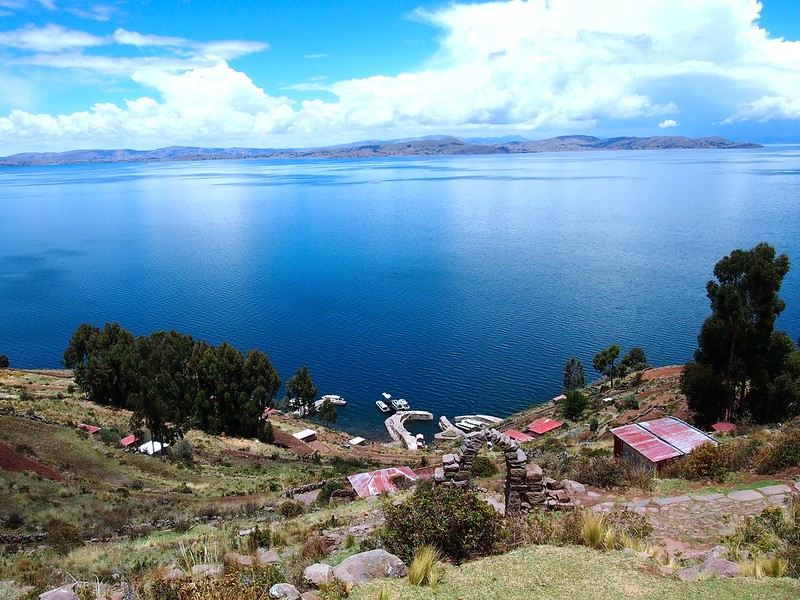
Most travel agencies in Puno offer the same itinerary, but we highly recommend booking directly at the dock instead of through an agency in town. It’s much cheaper (we paid 60 soles total per person — 30 for boat fare and 30 for room and board — instead of the 95-150 soles quoted around town). Also, since we handed our money directly to the boat captain and the lady who put us up, we know all of our money went straight to the islanders and not into some travel agency’s pocket. Another option to get even more off the beaten path is to check out some of the communities that live around the lake’s perimeter. We looked into doing that with a non-profit called CEDESOS, but their trips were out of our price range.
In the end, we’re glad we made the effort to spend a little more time at Lake Titicaca. Amantani and Taquile are still touristy, but they are also stunningly beautiful and unspoiled enough to make you feel like you’ve stepped back in time.

